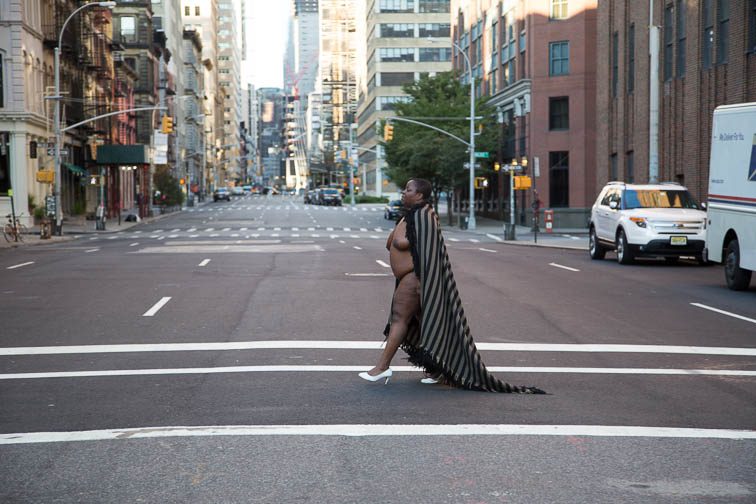Photographer and Visual artist Nona Faustine was born and raised in Brooklyn, NY. She is a graduate of the School of Visual Arts and the International Center of Photography at Bard College MFA program. Her White Shoes series has received world wide attention, and published in a variety of national and international media outlets such as the New York Times, Huffington Post, Hyperallergic, Greybook Magazine, Village Voice, The Guardian, Dodge and Burn Blog among many others. Faustine’s work has been exhibited at the Schomburg Center for Black Research in Harlem, the International Center of Photography in New York, Mana Contemporary in Jersey City, Studio Museum of Harlem, and Smack Mellon in Brooklyn. Her work focuses on history, identity, and representation.
Situated inside a photographic tradition while questioning the culture that bred that tradition, my practice walks the line between the past and the present. My work starts where intersecting identities meet history. The self-portraits are complex explorations that put them in dialogue with the daguerreotypes of slaves, in South Carolina from 1850. Images commissioned by the Naturalist, Louis Agazzi and Daguerreotypist, J.T. Zealy and the Hottentot Venus steeped in pseudo science and phrenology. Self-portraiture allows me to respond to those images of people who were put on display as examples of inferiority, politicized black bodies in the early history of photography. Images made long ago and ideas perpetuated even now.
In the series “White Shoes”, I quietly yet defiantly photograph myself at locations that refer to the largely unknown, 250 year hidden history of slavery in New York City. Wearing nothing but symbolic white pumps. I document myself in places where the history becomes tangible. Acting like a conduit or receptor, in both protest and solidarity, with people whose names have been forgotten and whose contributions remain unacknowledged. Conjuring past memories embedded in the land. For a few moments I am at the curtain of time collapsing dimensions. The resulting images are both historical and anti-historical, as they pose questions to which the answers have been violently denied. The naked body is one of the oldest subjects of art history. The figurative and literal weight of the black female body and the role it plays in Western society and the canon of art history, reconstructing a narrative of race, memory, and time that delve into folklore and anthropology. These are intense meditative reflections of a history Americans have not come to terms with, challenging the duality of what is both visible and invisible.
